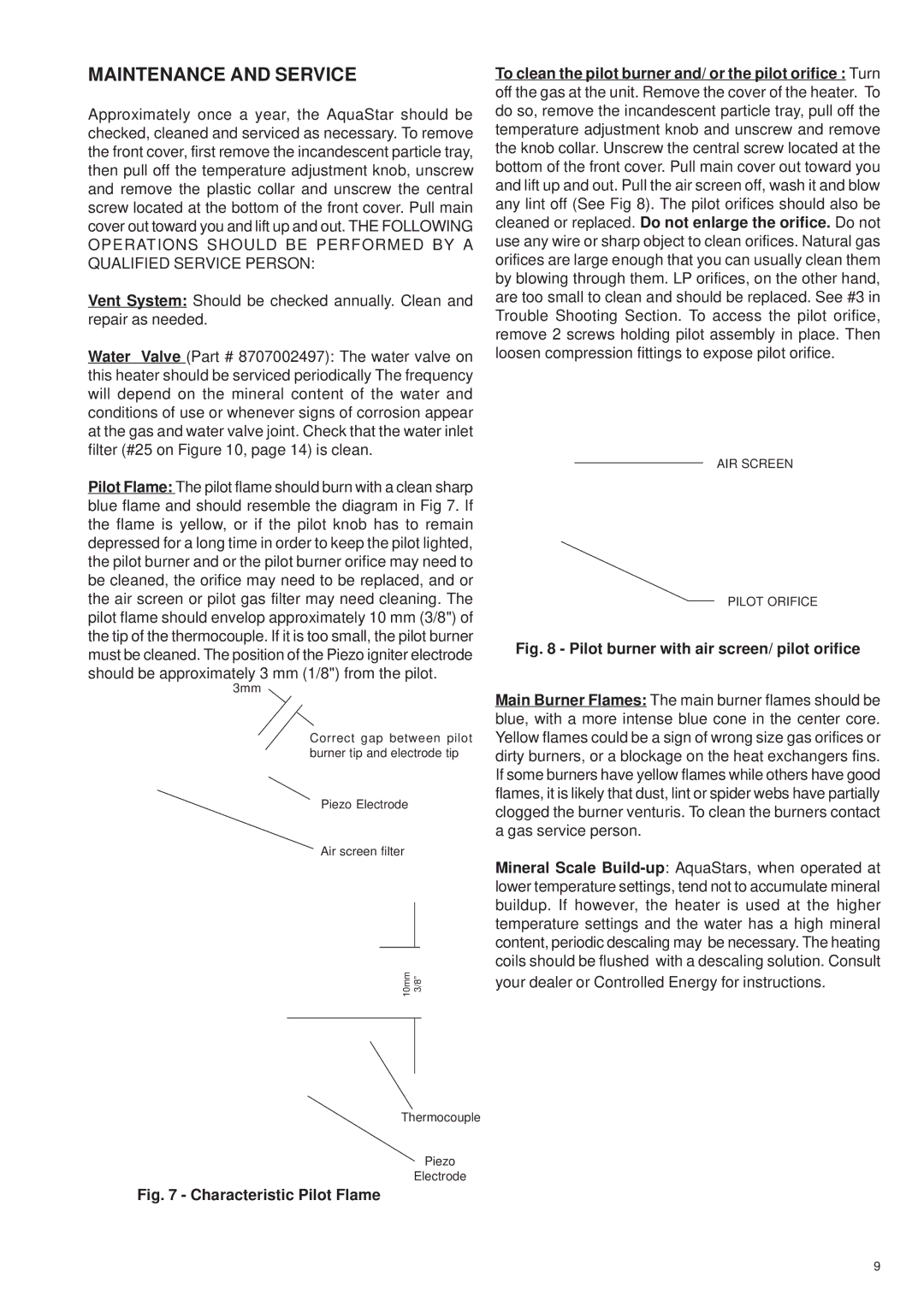38B LP, 38B NG specifications
The AquaStar 38B LP and AquaStar 38B NG are cutting-edge water heating solutions designed for efficiency and performance, ideal for both residential and commercial applications. These models boast a sleek, compact design, making them suitable for installation in tight spaces while still delivering robust heating capabilities.One of the key features of the AquaStar 38B LP and 38B NG is their advanced energy efficiency. With an impressive Energy Factor (EF) rating, these units utilize state-of-the-art heat exchange technology to maximize heat transfer and minimize energy consumption. This translates to reduced utility bills and a smaller carbon footprint, making them eco-friendly options in today’s sustainability-focused market.
The AquaStar models are available in two fuel types: LP (liquefied propane) and NG (natural gas). This dual-fuel flexibility allows users to select the ideal option based on availability and cost, ensuring optimal performance tailored to individual needs. The integration of high-quality burners further enhances the efficiency and reliability of these systems, ensuring quick recovery times and consistent hot water availability.
One notable characteristic of the AquaStar 38B units is their ability to provide continuous hot water. This makes them an excellent choice for households with high demand or commercial establishments like restaurants and hotels, where hot water is required throughout the day.
Moreover, the AquaStar 38B models are equipped with innovative safety features to enhance user protection. The built-in temperature control mechanism allows users to set their preferred water temperature, while also incorporating anti-scald technology to prevent overheating.
In terms of maintenance, the AquaStar 38B units stand out with their user-friendly design. Routine maintenance is straightforward, and the models feature easily accessible components for servicing, which contributes to their longevity and reliability.
In conclusion, the AquaStar 38B LP and 38B NG represent a fusion of efficiency, safety, and advanced technology. With their energy-saving capabilities, versatile fuel options, and robust design, these water heaters are a worthwhile investment for anyone seeking reliable and efficient hot water solutions.

